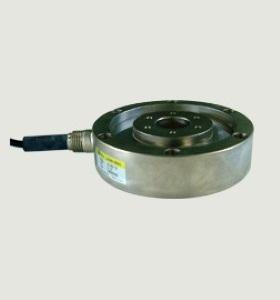Tension load cells are crucial components used in various industries to accurately measure and monitor tension forces. They play a vital role in ensuring the safety, efficiency, and quality of processes involving tension. In this beginner’s guide, we will explore the basics of tension load cell, their operation, applications, advantages, limitations, factors to consider when choosing them, installation and maintenance tips, as well as common troubleshooting issues.
What is a Tension Load Cell?
Tension load cells are devices designed to measure the tension or pulling force in a system. They are typically used in applications where knowing the precise amount of force being applied is essential. Tension load cells are available in various types, including S-beam, canister, and pancake load cells, each with its own unique characteristics and applications.
How Do Tension Load Cells Work?
Tension load cells operate based on the principle of strain gauge technology. Inside a tension load cell, strain gauges are bonded to a metal element that deforms under the applied force. As the metal element stretches or compresses, the strain gauges also experience a change in resistance. This change in resistance is measured and converted into an electrical signal, which is then calibrated to provide an accurate reading of the applied tension force.
A typical tension load cell consists of four strain gauges arranged in a Wheatstone bridge configuration. These strain gauges are connected to a signal conditioning circuit, which amplifies and filters the electrical output. The output signal is then sent to a data acquisition system for further processing.

Applications of Tension Load Cells:
Tension load cells find applications in a wide range of industries. In the manufacturing sector, they are used for force monitoring in assembly lines, material testing, and quality control. In the aerospace industry, tension load cells are crucial in testing the structural integrity of aircraft components, such as wings and landing gear. In the automotive sector, they are used for testing suspension systems and measuring the tension in belts and chains. Other industries that utilize tension load cells include construction, marine, oil and gas, and research and development.
Advantages and Limitations of Tension Load Cells:
One of the primary advantages of using tension load cells is their high accuracy and reliability. They provide precise and repeatable measurements, allowing for precise control and monitoring of tension forces. Tension load cells also have a wide dynamic range, making them suitable for a variety of applications. Additionally, they can withstand harsh environmental conditions, including high temperatures and corrosive substances.
However, tension load cells also have limitations. They may be sensitive to temperature changes, which can affect their accuracy. Overloading or applying excessive force can cause permanent damage to the load cell. Additionally, tension load cells require careful installation and calibration to ensure accurate readings.
Factors to Consider When Choosing Tension Load Cells:
When selecting a tension load cell, several factors need to be considered. The first is the capacity of the load cell, which should be suitable for the maximum force expected in the application. Accuracy requirements are also crucial, as different load cells have different accuracy levels. Environmental conditions, such as temperature, humidity, and exposure to chemicals, should also be taken into account. Finally, installation considerations, such as mounting options and compatibility with existing systems, should be evaluated.
Installation and Maintenance Tips:
Proper installation is essential for accurate and reliable measurements from tension load cells. Here are some step-by-step guidelines:
- Ensure the load cell is compatible with the application’s requirements.
- Mount the load cell securely and ensure proper alignment.
- Connect the load cell to the data acquisition system using shielded cables.
- Check for any external factors that may impact the load cell’s performance, such as vibrations or electromagnetic interference.
- Calibrate the load cell according to the manufacturer’s guidelines.
To maintain optimal performance and longevity, regular maintenance is necessary. This includes keeping the load cell clean, inspecting cables for damage, and performing periodic calibration checks.
Common Troubleshooting Issues:
Despite proper installation and maintenance, issues may still arise when working with tension load cells. Here are some common problems and possible solutions:
- Inaccurate readings: Check for loose connections, faulty wiring, or improper calibration.
- Overload or fatigue failure: Ensure the load cell is not subjected to forces beyond its rated capacity.
- Temperature effects: Consider temperature compensation techniques or use load cells specifically designed for extreme temperatures.
- Environmental interference: Shield the load cell from electromagnetic interference or vibrations by using appropriate enclosures or isolators.
Conclusion:
Data loggers are essential devices used in various industries in conjunction with tension load cells to measure and monitor tension forces accurately. They provide valuable data for process control, quality assurance, and safety by recording and storing tension force measurements over time.
By understanding the basics of tension load cells, their operation, applications, advantages, limitations, factors to consider when choosing them, installation and maintenance tips, as well as common troubleshooting issues, readers can make informed decisions when selecting and working with tension load cells. Remember to always consult the manufacturer’s guidelines for specific instructions regarding your particular model of tension load cell.
